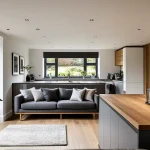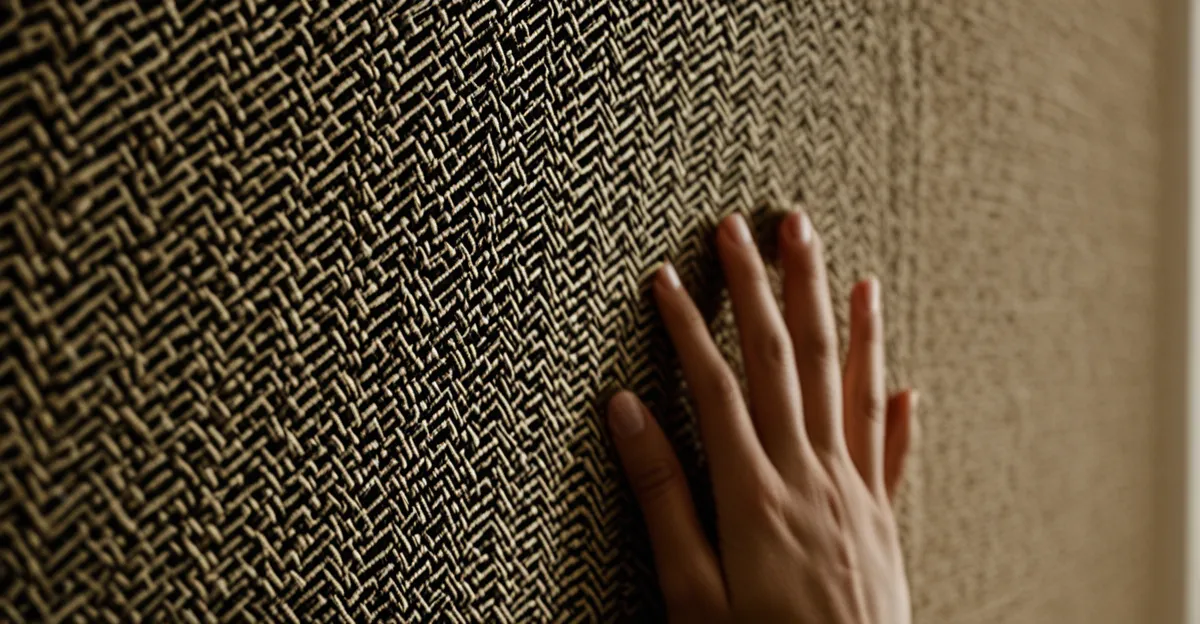Immediate Steps to Reduce Apartment Noise
When you want quick soundproofing tips UK, focusing on small yet effective changes can significantly reduce neighbour noise. One of the simplest and most cost-effective DIY apartment noise fixes is to block gaps under doors and around windows. Using draft excluders or weatherstripping seals the common escape routes for sound, preventing noise leakage without permanent alterations.
Rearranging furniture is another practical step. Placing heavy bookcases or wardrobes against shared walls can absorb or redirect sound waves. This tactic not only minimizes noise from neighbours but also improves your room’s acoustics with minimal expense. Additionally, incorporating heavy curtains or rugs provides instant noise dampening by softening reflections from hard surfaces.
Have you seen this : How Can You Transform Your Living Space to Optimize Comfort and Style?
These immediate solutions are ideal for those seeking fast, renter-friendly noise reduction techniques. Together, these adjustments create a more peaceful environment in your apartment without complicated installations or permission hurdles.
Choosing the Best Soundproofing Materials for UK Apartments
Selecting the right soundproofing materials UK is crucial for effectively minimizing noise. Among the best products for apartment noise, acoustic panels stand out due to their ability to absorb sound waves and improve room acoustics without bulky installations. These panels are especially useful to reduce neighbour noise from conversations, TV sounds, or music in shared walls.
In parallel : Maximizing Small Spaces: Creative Ideas for UK Homes
Another highly effective solution is mass loaded vinyl (MLV), which acts as a dense barrier to block sound transmission. MLV is thin enough to be installed behind drywall or under flooring, making it suitable for flats where space is limited. It’s particularly good for reducing both airborne noise and impact sounds from adjacent apartments, addressing common noise issues seen in UK flats.
Door seals also play a vital role. High-quality door sealing strips prevent sound leakage through gaps, complementing other materials like acoustic panels or MLV to provide a full noise reduction system. These seals are easy to fit and are a renter-friendly solution since they require no permanent alterations.
When sourcing these materials within the UK, it’s important to consider affordability without compromising quality. Many retailers offer DIY soundproofing materials designed for UK apartments, balancing cost, effectiveness, and ease of installation. Choosing the right combination—such as pairing acoustic panels with door seals—can greatly enhance your noise reduction while keeping expenses manageable.
Soundproofing Solutions for Renters
When seeking temporary soundproofing options that suit renters, non-permanent apartment fixes are the key. These solutions avoid damage and often need no landlord permission, making them ideal renter-friendly noise solutions in UK flats.
One effective method is installing removable acoustic panels, which can be attached with adhesive putty or Velcro strips. These panels absorb sound and improve room acoustics without drilling or permanent fixtures. Window inserts also help reduce neighbour noise by sealing gaps and blocking outside sounds, yet remain easily removable at tenancy end.
Using adhesive putty or similar non-invasive materials to secure soundproofing elements prevents damage, ensuring you comply with typical UK tenancy agreements. This approach respects tenant rights, allowing noise reduction without risking deposit losses or landlord disputes.
In summary, focusing on temporary soundproofing using removable panels, window inserts, and damage-free installations offers a practical way for renters to reduce neighbour noise and enhance peace in their homes without permanent alterations.
Addressing Common Noise Sources in UK Apartments
Understanding how to block neighbour noise UK effectively requires identifying the main sources: airborne sounds like talking, TV, and music from adjacent flats, impact noises such as footsteps or furniture movement upstairs, and street or traffic noise penetrating through windows or walls.
To reduce airborne noise, sealing gaps between walls and installing acoustic panels helps absorb sound waves, limiting how much travels between shared living spaces. Soft furnishings and heavy curtains also contribute by dampening reverberations inside your own flat, lessening the overall noise impact.
For impact noise, solutions focus on preventing vibrations from transmitting through floors. Adding thick rugs or underlayments can cushion footsteps and soften furniture movements, which significantly lowers noise disturbance from upstairs neighbours. These methods are practical and suitable for flats where structural alterations are restricted.
When it comes to cutting down street or traffic noise entering through windows and walls, using double glazing or secondary glazing provides an effective barrier against external sounds. Additionally, installing draft excluders around window frames tackles smaller gaps, further reducing intrusion. Combining these approaches offers a comprehensive way to reduce outside noise flat by flat.
Together, addressing airborne, impact, and external noise with targeted strategies ensures better peace and quiet in city living environments common in UK apartments.
Immediate Steps to Reduce Apartment Noise
For those seeking quick soundproofing tips UK, starting with practical DIY apartment noise fixes can make a notable difference in reducing neighbour noise. First, blocking gaps under doors and around windows using draft excluders or weatherstripping is a highly effective, low-cost approach. These seals prevent sound from escaping or entering through small openings, immediately cutting down ambient noise without permanent changes.
Another easy tactic involves rearranging furniture. Placing heavy items like bookcases along shared walls not only acts as a physical barrier but also absorbs sound waves, helping to disrupt noise transmission from adjoining flats. This method leverages existing furnishings and enhances room acoustics while requiring no extra investment beyond repositioning.
Additionally, incorporating heavy curtains or thick rugs provides instant noise dampening by softening reflections from hard surfaces, which reduces echo and muffles sounds. These materials are excellent for transient noise like footsteps, TV volumes, or casual conversation filtering through thin walls.
Together, these DIY apartment noise fixes combine convenience, affordability, and effectiveness, enabling residents to reduce neighbour noise promptly while maintaining flexibility for renters and homeowners alike.
Immediate Steps to Reduce Apartment Noise
Blocking sound paths starts with sealing gaps under doors and around windows using draft excluders or weatherstripping—an easy and affordable way to reduce neighbour noise promptly. These materials create barriers where sound typically leaks, helping residents quickly implement DIY apartment noise fixes without permanent alterations or specialist tools. The effectiveness lies in eliminating small openings that can let sound travel freely between flats.
Rearranging furniture is a strategic choice that leverages existing items like bookcases or wardrobes placed against shared walls. These serve as physical sound absorbers or deflectors, disrupting the direct flow of sound waves and reducing the penetration of noise from neighbours. This approach suits renters and homeowners wanting immediate improvement with minimal cost and effort, combining functionality with spatial optimization.
Complementing these methods, heavy curtains and thick rugs offer instant noise dampening. These soft furnishings absorb sound reflections within rooms, mitigating echo and muffling intrusive noises such as footsteps or voices. Using these materials significantly contributes to creating a quieter living space and represents a practical part of quick soundproofing tips UK residents can apply.
Together, these accessible actions—blocking gaps, furniture rearrangement, and adding soft furnishings—form a foundational toolkit for anyone looking to reduce neighbour noise effectively through quick soundproofing tips UK and simple DIY apartment noise fixes.







